The 2013 Guthman Musical Instrument Competition featured an array of new instruments that combine electronics, computers and sensors, often building on a base of a traditional acoustic instrument. The $10,000 competition had some prestigious judges this year, including Laurie Anderson, David Wessel, and electronic musician and sound designer Richard Devine.
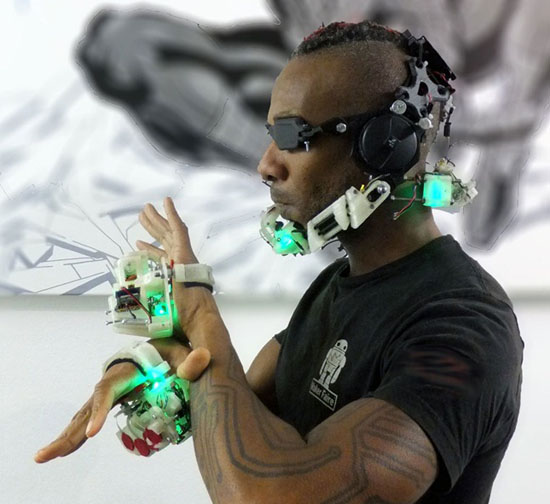
Onyx Ashanti and his Beatjazz Exo-voice Prosthesis instrument
Some pictures and video of the finalist are in the full blog entry.
Beatjazz Exo-voice Prosthesis by Onyx Ashanti
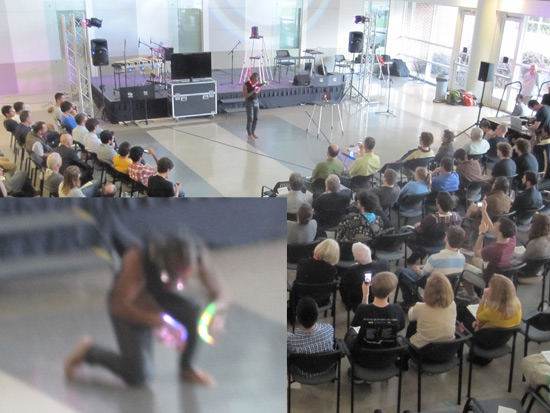
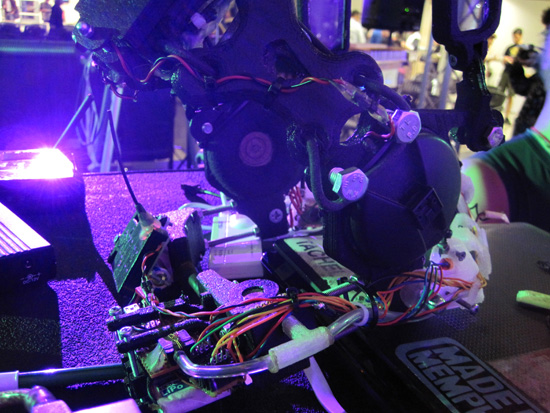
Onyx Ashanti presented a wearable controller with myriad sensors, including pressure sensors for breath control, accelerometers that track his head and hand motions, and a large array of fsr sensors under his fingers, and even some for his lips. The design was originally modeled off a saxophone interface.
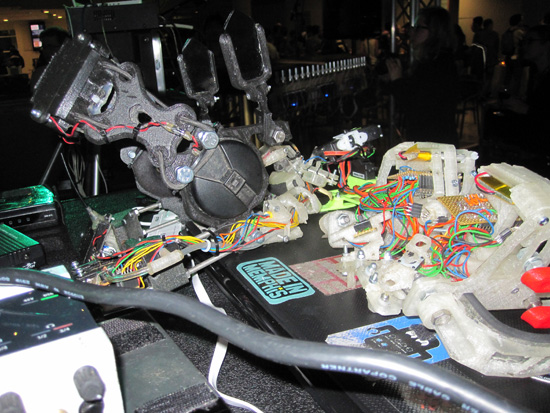
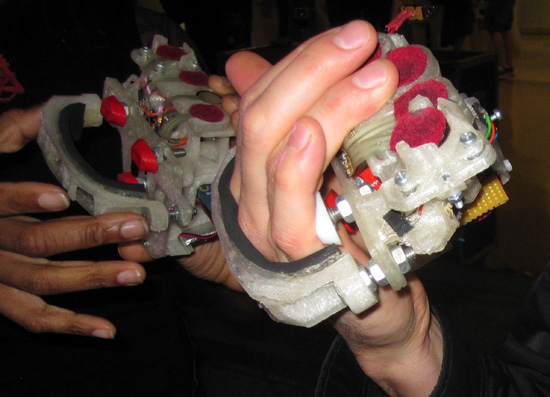
An upclose look at the electronics reveals a smorgasbord of arduinos, wifi interfaces, and 3D printed structures he made with a RepRap. The entire design is open source for anyone to reprint and recreate. He’s got a crowd fundraiser going to create a collaborative version of this controller.
The great thing about his controller is that lighting tells the audience what he’s doing with all those inputs. You can see when he’s exhaling and inhaling to change the sound. He also has a small robot that bends and twists as his changes the parameters (embedded video above). He uses this as a feedback mechanism to watch what he’s doing with the accelerometers and other inputs. With over 40 parameters to control, and what looks like an equal number of sensor inputs, keeping track of what does what could be unmanageable. He’s developed a number of “latching” schemes that let him navigate the parameter space, locking some in place while he adjusts others, remapping all the inputs on the fly into manageable configurations.
The Rangeinet by Daniel Iglesia
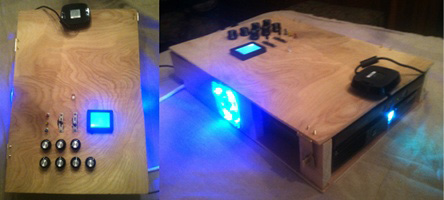
The Rangeinet is based on a 3D scanning kinect and projector that changes sound based on the size and location of objects in front of it. In some modes, it has lines that scan horizontally and vertically, and trigger sounds when they run into an object. The performance involved Dan Inglesia sitting at the machine turning knobs, while two helpers moved music stands, 2×4’s and themselves around the stage to change the sound.
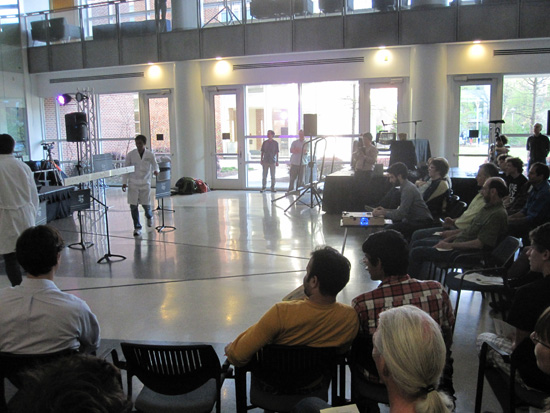
Roli Seaboard performed by Heen-Wah Wai
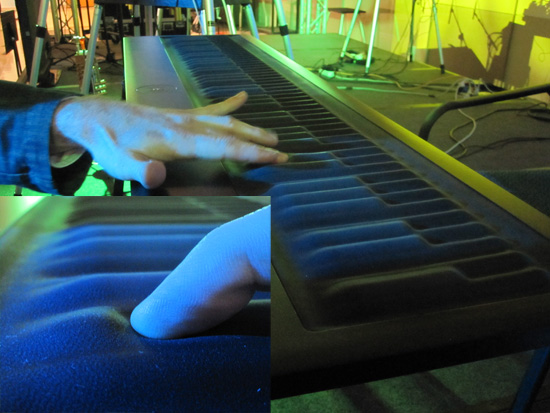
The Roli Seaboard” is a new type of (piano) keyboard with a squishy pad molded in the shape of a traditional piano that responds to continuous pressure input. It can detect the initial strike velocity, and then change pitch if the player pushes the key to the side (tremolo) and change volume as the player adds pressure or releases pressure. The underlying technology is a massive array of FSRs. Unlike many pressure sensitive pads, the squishy rubber gives the player much more control and feedback over the pressure (both vertical and sideways). It has a great feel, and seems like they found a good sweet spot between too stiff and too soft.
Video Sampling from the Competition
Other Contestants
There were many other entrants with interesting stuff, too.
- Espongina by Merche Blasco
A water based controller with two containers that each have a piezo. Vibrations in the water are sonified with a computer.
ESPONGINA – Water controller/ FINAL DEMO – Thesis 2 from merche blasco on Vimeo. - Electrumpet by Hans Leeuw
- The EMvibe by N. Cameron Britt
From his website:The EMvibe is an acoustic vibraphone augmented with computer-controlled electromagnetic actuators that enable the vibraphone to be “bowed” electromagnetically. The EMvibe allows for enhanced control of the vibraphone’s amplitude envelope and harmonic content and is capable of infinite sustain of up to seven pitches simultaneously.
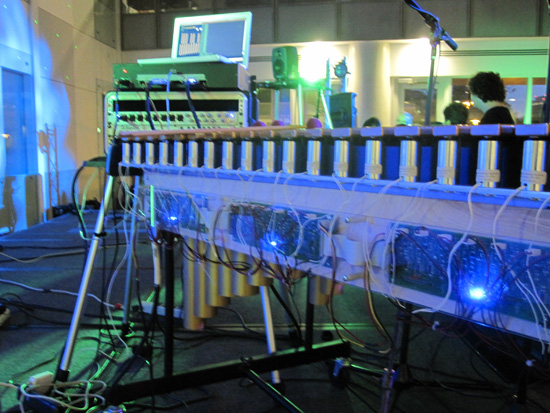
- Cilia: a flute controller by Bruce Gremo
